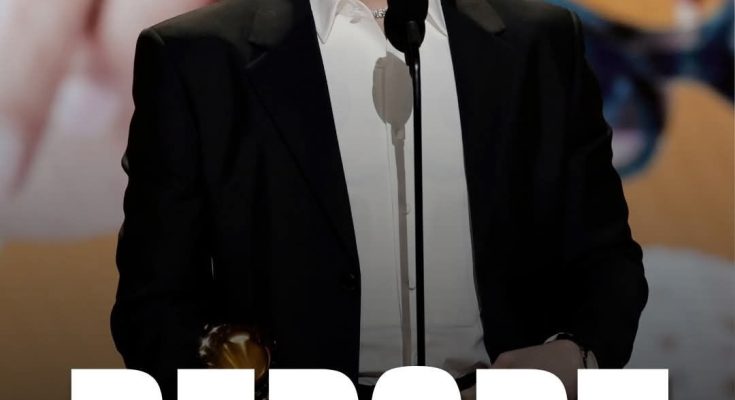The announcement that Bad Bunny would be performing at the Super Bowl 60 halftime show has sparked a wave of mixed reactions among fans, with a significant number expressing their disapproval and even petitioning for the NFL to replace him with country music legends such as George Strait or other prominent country artists. This backlash, prominently voiced on platforms like Change.org and amplified by media outlets including TMZ Sports, highlights the intersection of music, culture, and fan expectations in one of the world’s most-watched live entertainment events.
Bad Bunny, known for his vibrant reggaeton and Latin trap music, has made a huge impact in recent years as a global superstar who pushes cultural boundaries and celebrates his Puerto Rican roots. His influence extends far beyond just music; he is an icon of Latin culture, fashion, and progressive social values. However, despite his broad appeal, there is a segment of Super Bowl viewers who have voiced strong objections to his selection as the halftime performer. These objections are primarily rooted in concerns over his lyrical content, musical genre, and what some perceive as a lack of cultural relevance or alignment with the traditional NFL fan base.
The petitions circulating on sites like Change.org reflect a clear sentiment from these fans who feel that the Super Bowl halftime show, a platform historically featuring mainstream American music genres such as pop, rock, and country, should instead spotlight performers who resonate more deeply with what they consider “American” music traditions. Country music, in particular, has a loyal and expansive fan base that aligns with many NFL viewers, especially given the sport’s deep roots in southern and rural American culture. Advocates for this viewpoint argue that an artist like George Strait, often hailed as the “King of Country,” would better represent the tastes and values of the typical Super Bowl audience.
George Strait’s name comes up frequently in these petitions because of his legendary status within country music and American music at large. With over four decades in the industry, numerous awards, and record-breaking hits, Strait embodies a style and narrative that many fans associate with the cultural fabric of the United States. His music often touches on themes of heartland values, love, and life’s simple pleasures, which some fans believe are more appropriate for a family-oriented event like the Super Bowl halftime show. Supporters of this perspective feel that his presence would create a unifying experience rather than a divisive one.
The opposition to Bad Bunny also stems from concerns about his lyrical content, which some critics label as explicit or inappropriate for a broad, family-friendly audience. Bad Bunny’s music often explores themes related to partying, relationships, and social issues, using language and imagery that may not align with the expectations of every viewer. This disconnect in expectations is central to the controversy. For many traditionalists, the Super Bowl halftime show is not only a musical performance but also a reflection of shared cultural values. They argue that performers with more conservative or mainstream appeal would be better suited to avoid alienating portions of the audience.
At the same time, the criticism over Bad Bunny’s genre touches on a broader conversation about diversity and representation in major cultural events. Reggaeton and Latin trap are relatively new to the mainstream American music scene compared to longstanding genres like country or rock. These Latin genres bring a different rhythm, language, and cultural backdrop, which can be unfamiliar or uncomfortable for some viewers. The choice to have Bad Bunny headline the halftime show can be seen as a statement by the NFL to embrace diversity and celebrate the growing influence of Latin music in the U.S. However, this effort to broaden representation has not been universally embraced, as demonstrated by the petitions seeking a return to more traditional performers.
Media coverage, such as that by TMZ Sports, has brought additional attention to the divide among fans. TMZ Sports often highlights the drama and public sentiment around high-profile sports and entertainment events, and their reporting has underscored how passionate and vocal fans are on this issue. Some of the petitions argue that the NFL is risking alienating a core segment of its audience by choosing Bad Bunny, potentially impacting viewership and overall fan satisfaction. They point to country music’s large and dedicated fan base as a safer, more commercially viable option that would please a wider audience.
Yet, there is also a counter-narrative that champions Bad Bunny’s selection as groundbreaking and necessary. Advocates argue that the Super Bowl halftime show should evolve to reflect the changing demographics and tastes of America’s population. Latin music has surged in popularity over the last decade, with artists like Bad Bunny breaking records and selling out arenas worldwide. His performance is viewed by supporters as a celebration of cultural diversity, youth culture, and modern musical innovation. For these fans, the backlash and petitions are seen as resistance to change and an unwillingness to embrace a more inclusive vision of American entertainment.
This tension between tradition and innovation is not new to the Super Bowl halftime show. Over the years, the NFL has balanced the desires of different audience segments by featuring a mix of artists across genres and generations. Past performers have ranged from classic rock bands like The Rolling Stones to pop icons like Beyoncé, and even hip-hop stars like Dr. Dre and Snoop Dogg. The inclusion of Bad Bunny continues this trend of genre expansion but pushes boundaries further by highlighting a non-English dominant artist in a traditionally English-language event. This shift challenges longstanding norms about what constitutes mainstream American music culture.
It’s also important to consider the broader cultural implications of the backlash. Many of the criticisms directed at Bad Bunny stem from cultural misunderstandings or biases against Latin music and the Spanish language. Some fans’ disapproval of his language use or cultural background reveals deeper issues related to inclusion and acceptance in mainstream media. The petitions calling for country music stars to replace him may inadvertently highlight a preference for comfort and familiarity over embracing multiculturalism. This dynamic underscores ongoing societal debates about identity, representation, and the evolving nature of American culture.
Despite the petitions and vocal opposition, the NFL has not indicated any intention of reversing its decision. The organization is aware of the risks involved but appears committed to moving forward with Bad Bunny’s performance. This decision aligns with the NFL’s broader efforts to appeal to younger and more diverse audiences, a demographic that is crucial for the league’s future growth. The halftime show is not just entertainment; it’s also a strategic tool for the NFL to signal inclusivity and cultural relevance in an increasingly diverse country.
In conclusion, the debate over whether George Strait or other country musicians should replace Bad Bunny at the Super Bowl 60 halftime show encapsulates a larger cultural dialogue about music, identity, and representation. While some fans’ petitions reflect genuine discomfort with Bad Bunny’s language, genre, or cultural importance, they also reveal underlying tensions about the direction of American entertainment and society. The choice of Bad Bunny represents both a celebration of Latin culture and a challenge to traditional expectations, forcing the NFL and its audience to grapple with questions of inclusion, cultural evolution, and the future of one of the most iconic live events in the world. Whether this decision will ultimately be celebrated or regretted remains to be seen, but it undeniably marks a pivotal moment in the ongoing conversation about diversity and representation in popular culture.



